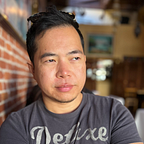Can AI Art Generators Truly Transform the World of Art?
Intro
AI art generators have taken the world by storm, allowing users to create stunning and unique artwork with the help of artificial intelligence algorithms. These tools use deep learning techniques to analyze and understand visual patterns, allowing them to generate original images based on user input or pre-existing data.
In this article, we will explore some of the top tools for generating AI art and examine their user experience and quality of output. We will also delve into the controversy surrounding these tools, discussing ethical considerations and addressing concerns about image sourcing.
DALL-E 2: The Pioneer in AI Art Generation
DALL-E 2 is widely recognized as the first mainstream AI art generator that captured people’s attention with its advanced capabilities. Developed by OpenAI, DALL-E 2 uses a massive dataset of text-image pairs to generate highly detailed and realistic images from textual prompts.
One of the standout features of DALL-E 2 is its user-friendly interface. It offers a simple yet intuitive experience, allowing users to input word prompts and fine-tune the generated results using an image editing tool. The tool provides various options such as edit, variations, share, save, and even allows users to import pre-existing images for AI edits.
While getting started with DALL-E 2 is easy, it also offers deeper customization options for those looking to explore its full potential. Users can experiment with different word prompts to achieve their desired results. However, it may take a few rounds of prompts before achieving a satisfactory output.
It’s worth noting that using DALL-E 2 comes at a cost. After consuming the initial free credits provided by OpenAI, users need to purchase additional credits at $15 per 115 credits if they require more usage.
Stable Diffusion: A Powerful Tool for High-Clarity Images
Stable Diffusion (also known as Stability AI) is another popular AI art generator that offers high-quality image generation. Like DALL-E 2, Stable Diffusion uses deep learning techniques to generate images based on user input and offers a standalone user interface for an enhanced user experience.
Compared to DALL-E 2, the workflow side of Stable Diffusion is more focused on the current image being created rather than managing archives. While it produces slightly better-quality images than DALL-E 2, both tools face challenges when it comes to achieving photorealism.
One notable aspect of Stable Diffusion is its open-sourced nature. Users can download and use the tool at no cost, although technical skills may be required for installation and usage. On top of that, Stable Diffusion allows users to select different design styles such as realistic, expressionism, comic, abstract, fanatical, ink, and more.
Midjourney: Crystal Clear Images That Surprise
Midjourney is an AI art generator that stands out for its ability to produce crystal clear images with remarkable clarity, sharpness, and saturation. The generated images are often mistaken for actual photographs due to their exceptional quality.
While Midjourney has gained recognition for its impressive output quality, it also comes with some limitations. The tool relies heavily on prompts provided by users and may not always deliver satisfactory results in terms of creativity or novelty. However, if the end goal is high-clarity imagery without much emphasis on creative exploration or customization options, Midjourney’s Discord app proves to be a powerful tool.
It’s important to note that while AI-generated images like those produced by Midjourney can blend seamlessly into hyper-stylized photography trends seen on platforms like Instagram; there have been instances where AI-generated content deceived viewers into believing they were viewing authentic human-created work.
Are AI Art Generators Ethical?
The ethical considerations surrounding AI art generators have sparked debates among scholars and artists alike. One major concern revolves around the sourcing of images used by these tools. There is often uncertainty about where the images come from and how they are obtained, raising questions about copyright infringement and ownership.
Another ethical dilemma arises from the fact that AI art generators have the potential to devalue human creativity. By automating the process of image creation, these tools raise concerns about the diminishing role of human artists in artistic production. This has led to discussions on whether AI-generated artwork should be considered original or merely a derivative work.
Controversy also surrounds the use of AI art generators for generating explicit or inappropriate content. While most platforms take measures to filter out such content, there are instances where users exploit these tools to create offensive or objectionable images.
Ultimately, determining the ethics behind AI art generators requires thoughtful consideration and ongoing dialogue within the art community and society as a whole.
To Wrap Up
The world of AI art generation continues to evolve rapidly, with new tools and technologies constantly emerging. DALL-E 2, Stable Diffusion, and Midjourney represent just a few examples of the top tools available for creating AI-generated artwork.
Each tool offers its own unique user experience and output quality, catering to different needs and preferences. Whether you’re an artist looking for inspiration or someone who wants to explore the creative possibilities offered by AI technology, these tools provide exciting opportunities for artistic expression.
However, it’s crucial to consider ethical implications when using AI art generators. Questions surrounding image sourcing, creative ownership, and responsible usage are essential aspects of this discussion. As we navigate this evolving landscape of artificial intelligence in art creation, it is important to strike a balance between embracing technological advancements while upholding ethical standards.
AI art generators have opened up new avenues for artistic expression by leveraging deep learning algorithms and computer vision techniques. These tools offer users an opportunity to explore their creativity through automated image generation processes. However, careful consideration must be given to ethical concerns surrounding image sourcing, diminishing human creativity value perception among other factors. As the field of AI art generation continues to evolve, ongoing discussions and dialogue are essential to address these ethical considerations and ensure responsible use of AI technology in the world of art.
